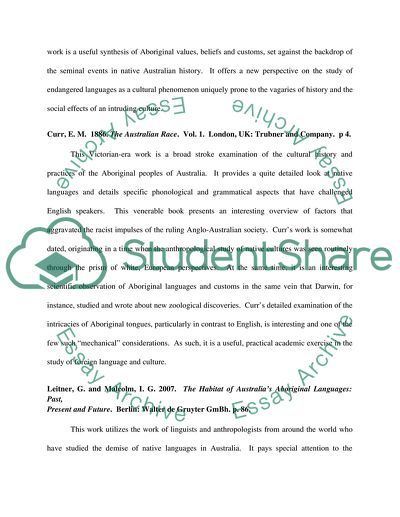Cite this document
(“Australian languages: Issues and Debates Annotated Bibliography”, n.d.)
Australian languages: Issues and Debates Annotated Bibliography. Retrieved from https://studentshare.org/culture/1755831-australia-study3611-australian-languages-issues-and-debates2
Australian languages: Issues and Debates Annotated Bibliography. Retrieved from https://studentshare.org/culture/1755831-australia-study3611-australian-languages-issues-and-debates2
(Australian Languages: Issues and Debates Annotated Bibliography)
Australian Languages: Issues and Debates Annotated Bibliography. https://studentshare.org/culture/1755831-australia-study3611-australian-languages-issues-and-debates2.
Australian Languages: Issues and Debates Annotated Bibliography. https://studentshare.org/culture/1755831-australia-study3611-australian-languages-issues-and-debates2.
“Australian Languages: Issues and Debates Annotated Bibliography”, n.d. https://studentshare.org/culture/1755831-australia-study3611-australian-languages-issues-and-debates2.


